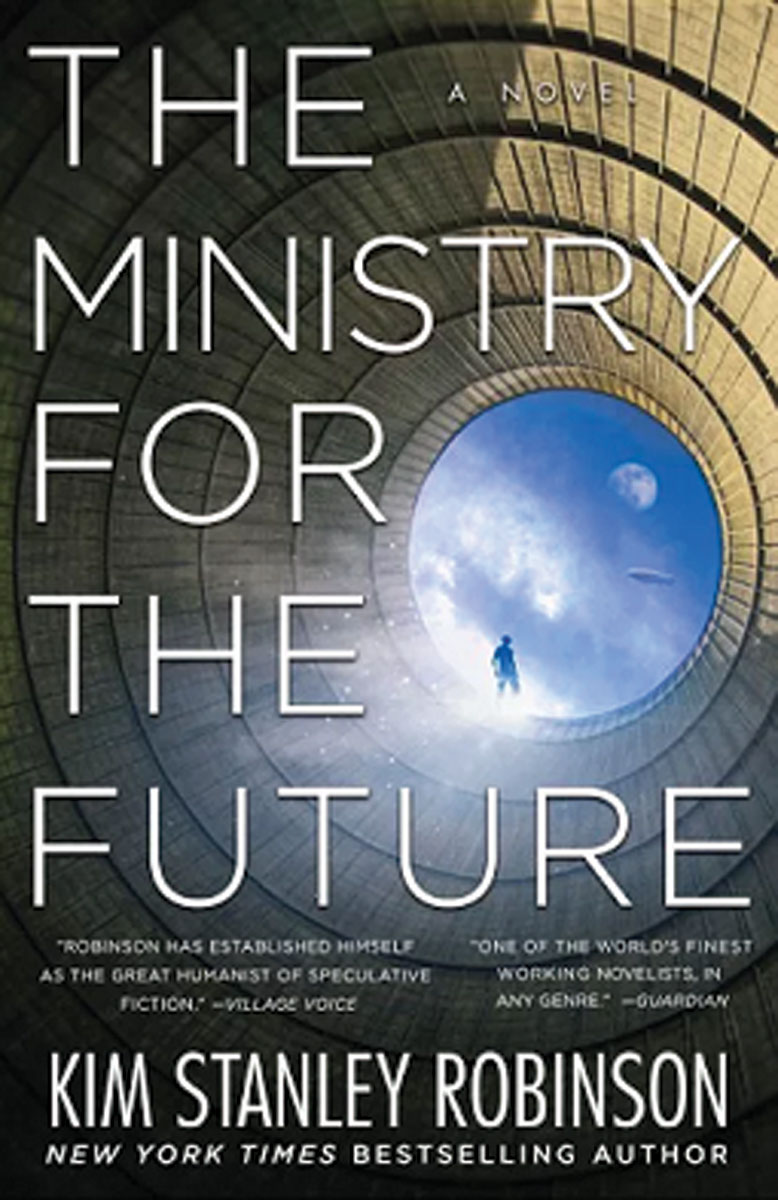Book Review: The Ministry For The Future
First published in Sanctuary Asia,
Vol. 43
No. 10,
October 2023
With improved technology and a much greater appetite among the young for books to remind them of the wonderful biosphere in which they live, it is heartening to see how many new, high-quality publications are emerging from within India. Here are books that Sanctuary believes should be in every public library and in the homes of all those whose hearts beat to nature’s drum.
The Ministry For The Future
By Kim Stanley Robinson
Published by Orbit Books
Paperback, 592 pages, ₹ 699

There is something deeply unsettling reading about the end of the world as you know it. The Ministry for the Future begins in a familiar, if unusual, setting for most of us – a small, unnamed town in Uttar Pradesh, a few years in the future. There, a young doctor named Frank May works at a small clinic. As the day goes on, temperatures rise – the town, the region, is in the grip of a massive heatwave. Eventually, temperatures reach deadly heights, and electricity is cut off across the Gangetic belt. Wet bulb temperatures rise to over 420C – well beyond the physiological limits of the human body.
Twenty million people die in India within a week. This heatwave sets off a chain of events across the world and over the following few decades, that unfold over the next 100 chapters. Only a little while before, the eponymous Ministry for the Future was formed, headquartered in Zurich. The Ministry is an international organisation formed to work with various governments and organisations, such as the Intergovernmental Panel on Climate Change (IPCC) and signatories to the Paris Agreement, to “advocate for the world’s future generations of citizens”.
Drastic changes take place, with some communities buckling down and refusing to acknowledge the climate crisis, while in other places, such as in India, a new government is voted on across caste, class and religious lines to focus on environmental and climate issues. The book goes on to describe the evolution of a new, egalitarian society in India, after this unimaginable tragedy. The Ministry for the Future is the only science fiction book I’ve read that speaks of caste injustice in India, and imagines a future in which Indian society is fully integrated.
The book switches between alternating points of view, from climate refugees, to members of an extremist environmentalist group assassinating those behind the climate crisis, to the head of the Ministry for the Future, to scientists trying to stop the Antarctic from thawing completely. Some of these stories even converge. Most of the characters remain unnamed, and the first-person perspective of their stories puts the reader squarely in their boots, living through the horrors they are suffering.
The style of the book is unique, alternating between first-person accounts, third-person reports, meeting notes, Socratic debates, and other philosophical interludes on topics such as cognitive bias, which may seem rambling at times, but then it will come to a point so sharp you wince. The Ministry for the Future is not just about climate change, but also its causes, primarily inequality. The book discusses and eloquently explains important real-world concepts such as the Gini Coefficient, and Inequality-adjusted Human Development Index. There is ample acknowledgement that climate change is genocide of the weakest and poorest sections of society, hastened by inequality and permitted by the blinkers of a capitalist economic system.
However, the book also details how individuals and communities, and the Ministry for the Future, come together to fight for a brighter future, from reimagining an economic system that can be more equitable, to creating carbon-negative cities, and pushing for and introducing legislation to protect future generations. Dystopias are a dime a dozen in science fiction. Well-written books that speak of how people come together to avert the dystopia? Those aren’t so common. My hope is that such things will not remain merely in the realm of science fiction, but one day become reality.
Reviewed by Bhavya Iyer.


